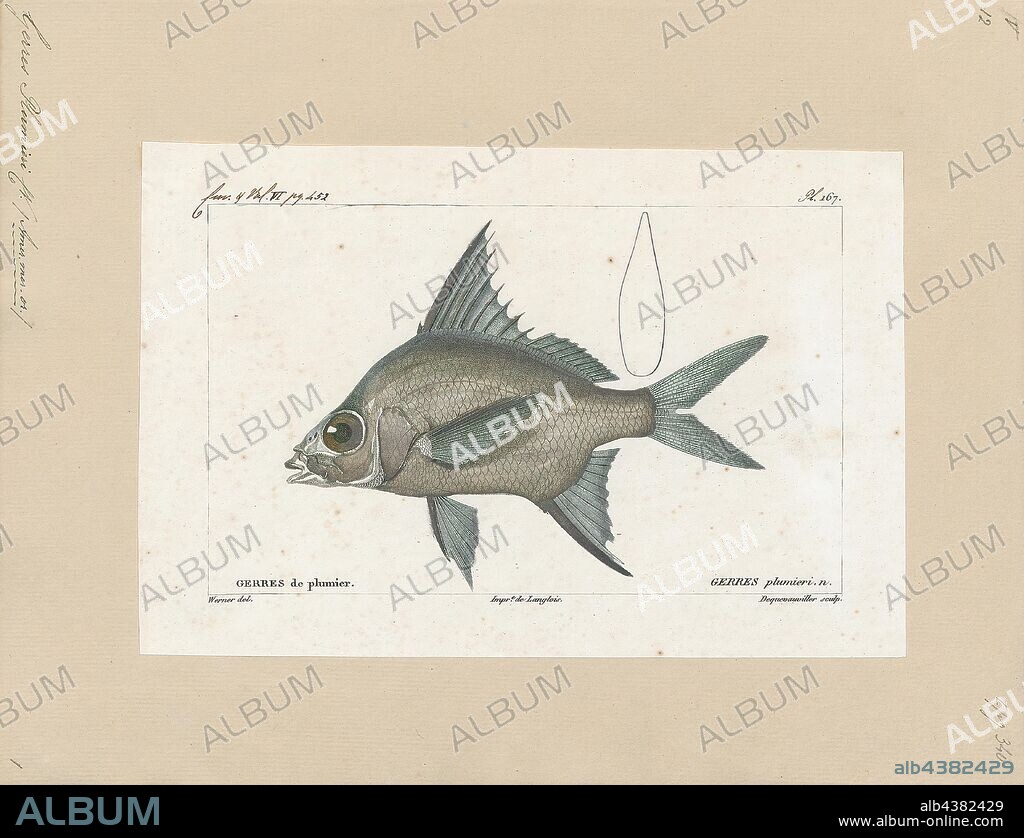alb4382429
Gerres plumieri, Print, The striped mojarra (Eugerres plumieri) is a demersal fish found in the western Atlantic, from North Carolina south along the U.S. coast, in the Gulf of Mexico, in the Caribbean from Cuba to Puerto Rico, and along the Central and South American coast from Mexico to Colombia. It inhabits shallow coastal waters with low salinity in mangrove-lined creeks and lagoons. It feeds on aquatic insects, crustaceans, micro-bivalves and detritus. This species has high fecundity, producing 85, 345 to 953, 870 eggs, and reaches a length of 40 cm. It is abundant in Mexico and Colombia, where it is one of the most important fishing resources, both as food and fishing bait., 1828-1849.

|
Zu einem anderen Lightbox hinzufügen |
|
Zu einem anderen Lightbox hinzufügen |



Haben Sie bereits ein Konto? Anmelden
Sie haben kein Konto? Registrieren
Dieses Bild kaufen.
Nutzung auswählen:

Untertitel:
Siehe automatische Übersetzung
Gerres plumieri, Print, The striped mojarra (Eugerres plumieri) is a demersal fish found in the western Atlantic, from North Carolina south along the U.S. coast, in the Gulf of Mexico, in the Caribbean from Cuba to Puerto Rico, and along the Central and South American coast from Mexico to Colombia. It inhabits shallow coastal waters with low salinity in mangrove-lined creeks and lagoons. It feeds on aquatic insects, crustaceans, micro-bivalves and detritus. This species has high fecundity, producing 85, 345 to 953, 870 eggs, and reaches a length of 40 cm. It is abundant in Mexico and Colombia, where it is one of the most important fishing resources, both as food and fishing bait., 1828-1849
Bildnachweis:
Album / quintlox
Freigaben (Releases):
Model: Nein - Eigentum: Nein
Rechtefragen?
Rechtefragen?
Bildgröße:
4733 x 3629 px | 49.1 MB
Druckgröße:
40.1 x 30.7 cm | 15.8 x 12.1 in (300 dpi)
Schlüsselwörter:
ABDRUCK • CUBA • ESSEN • KARIBIK • KUBA • LAGUNE • LEBENSMITTEL • MAHLZEIT • NAHRUNGSMITTEL • SPEISE • SPEISEN • VERPFLEGUNG
 Pinterest
Pinterest Twitter
Twitter Facebook
Facebook Link kopieren
Link kopieren Email
Email
